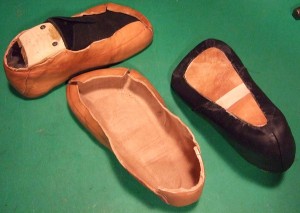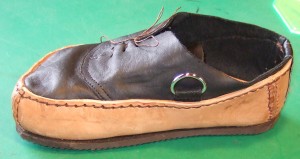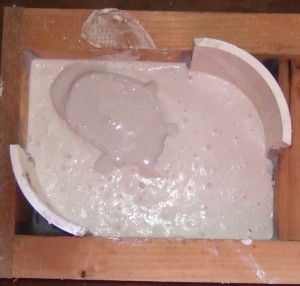Thanks to a member’s post on Crispin Colloquy, I found “Dress and Care of the Feet” by J.L. Peck at archive.org, a book which I found to be enlightening.
I have very short very wide feet. One foot is a 3½EEEEEE, the other a 4EEEEE. Yup, really. I’m 5’3″ so I’m not short. Okay, I’m not relatively short for a woman. Next to my 6′ spouse, I’m short. And my feet are very thick. All the volume in length I should have for my height is packed into short wide feet. We can do the “woe, genetics” thing another day. I’m just not that into beating my chest over things I can’t change.
With my feet it’s impossible to get shoes that fit the volume of my foot. If the shoe is short enough to fit my length, I can’t get my foot in them. If I can get my feet in them, they’re so long nothing on the footbed fits.
Over the last 8 years I’ve been on a journey to get shoes that actually fit. I’ve gone from shoes made by others (custom made shoes which gave me an ingrown toenail and mildly uncomfortable clogs with a generic footbed that didn’t accommodate the intricacies of the bottom of my foot) to shoes I’ve made.
10th century turn shoes which were too short and exacerbated the ingrown toenail
Pig skin lined wool which were very comfortable if too loose and which still lacked the necessary custom foot bed
The pair of shoes I’m wearing now (kangaroo lining and chrome tanned bison outer) which are ugly but the most comfortable and easily the healthiest shoe I’ve worn yet, though still somewhat lacking in having the footbed just right.
With each iteration of footwear I’ve learned something vital and each subsequent effort is closer to the mark.
So, back to Care and Feeding of the Foot . . . In reading Peck’s “Dress and Care of the Feet” I got confirmation on what I have done. In making the toe box of my shoes overly generous I have been slowly restoring my feet to health. My ingrown toenail no longer bothers me, the large callous at the base of my little toe has peeled off and my ankles are getting healthier and stronger. I no longer lose a day to lameness when I spend a day running around outside.
So, though my shoes are very unfashionable, my feet are happier. With that I interject a hearty and droll “Go me!”
My next effort will be a pair of shoes with the lace encircling the ankle. I’ve made a test shoe and it wraps around my foot properly and provides the right support. I just need to master the footbed. I’ve got plans for that (custom press to shape mold-able cork).

I made two iterations of this shoe, one with the ankle race and one without. The one with the lace race around the ankle was easily the best as it keeps my foot correctly oriented in the shoe.
If you’re wondering about the lacing hardware and direction, my instep is so sensitive I am uncomfortable with laces running across it, even with the extra buffering of a lined tongue. Keeping the laces on the outside of the shoe makes having laced shoes tolerable. By trial and error, I’ve discovered tying the shoe at the bottom provides the most comfort.
The next pair of shoes will have one lace hook paired with lace Ds. I can knot the lace at the bottom and by unhooking the lace off one of the upper hooks I can loosen the laces enough for the shoe to be taken off and put back on.






















